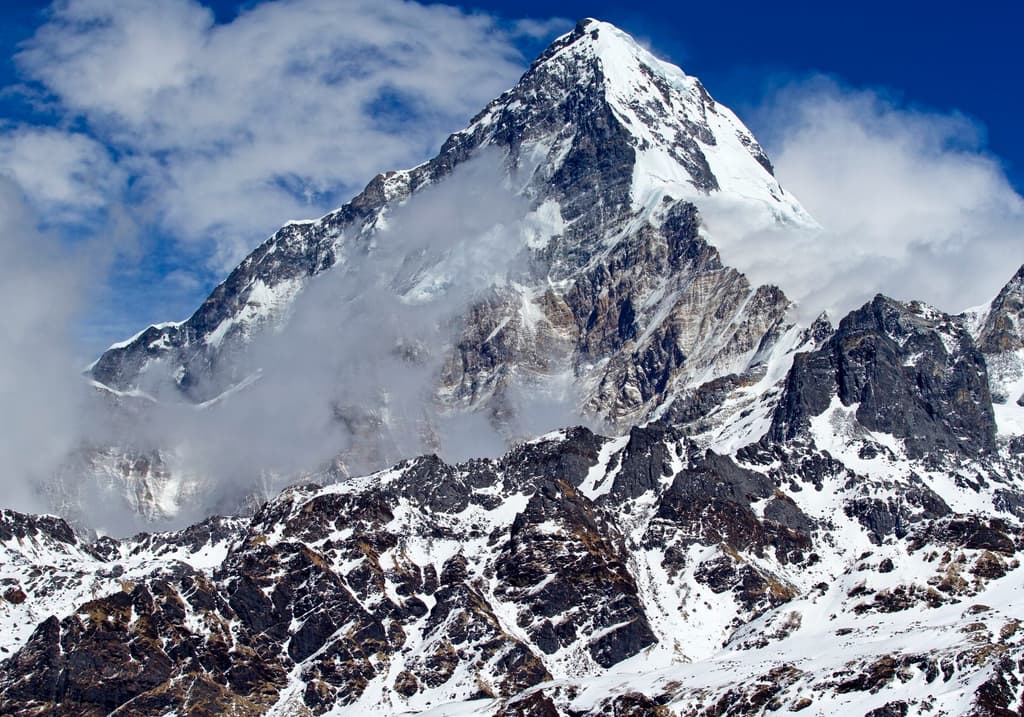Peak Climbing Seasons in Nepal: Best Times to Plan Your Expedition
We know that timing can make or break your Himalayan climbing dreams. At Luxury Holidays Nepal, we've guided hundreds of climbers through Nepal's incredible peaks, and we've learned that choosing the right season is just as crucial as your physical preparation.
This comprehensive guide is designed for serious mountaineers, adventure enthusiasts, and expedition leaders who want to maximize their chances of summit success while staying safe on the world's highest peaks. We'll share our years of experience helping climbers navigate Nepal's complex mountain weather patterns and seasonal variations.
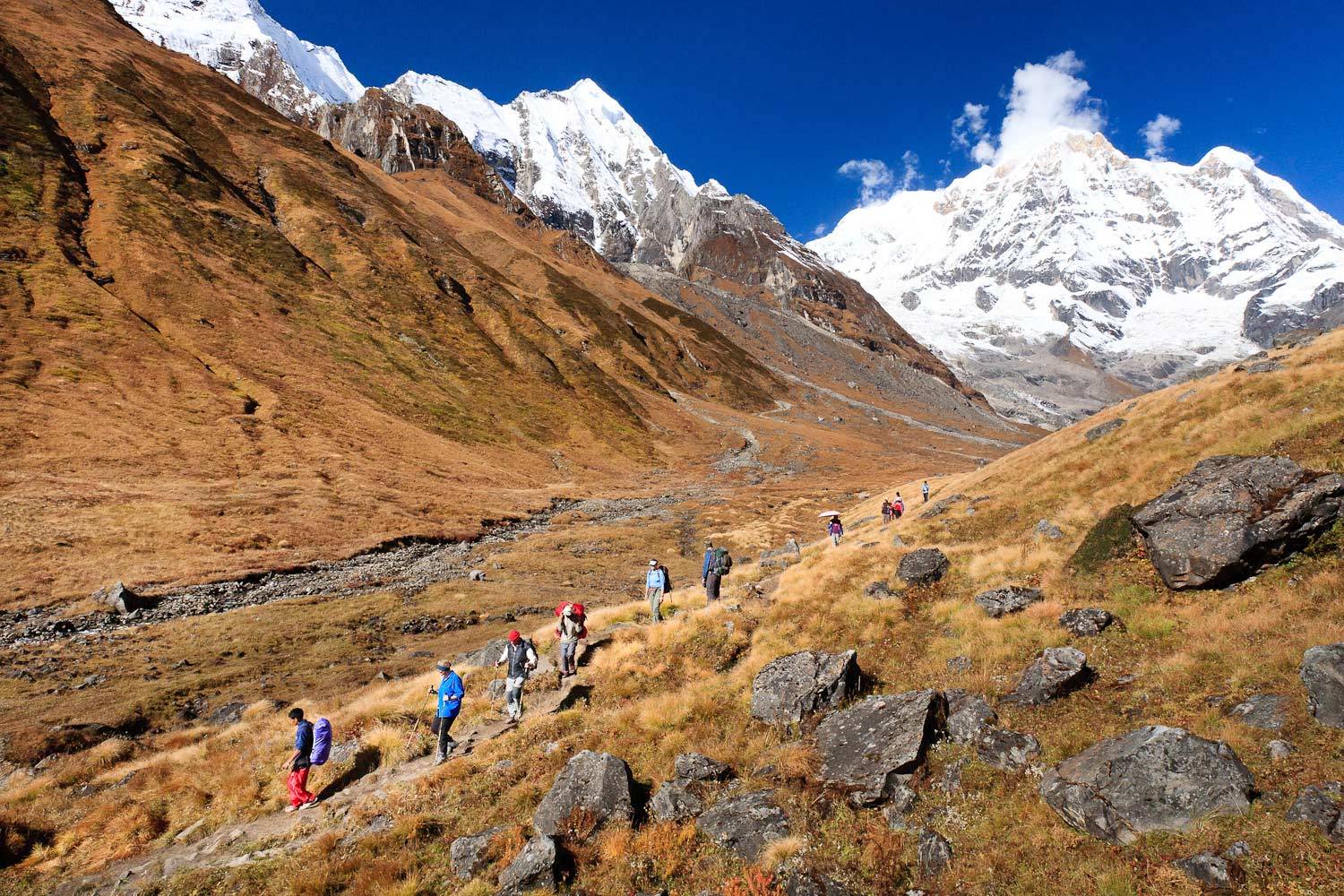
We'll walk you through Nepal's two primary climbing windows - the pre-monsoon spring season and the post-monsoon autumn period - explaining exactly why these months offer the best conditions for different types of expeditions. You'll discover peak-specific climbing recommendations that take into account each mountain's unique weather patterns, route conditions, and logistical requirements.
We'll also dive deep into strategic planning and cost optimization, showing you how understanding seasonal demand can help you save thousands of dollars while securing the best guides, permits, and equipment for your expedition. Our booking timeline strategies will ensure you're prepared months in advance, giving you the best shot at standing on top of the world's most magnificent peaks.
Understanding Nepal's Mountain Climbing Calendar

Pre-monsoon climbing window advantages
We've found that the pre-monsoon season from March to May offers some of the most reliable climbing conditions in Nepal. During this period, we experience gradually warming temperatures that make higher altitude climbing more manageable, with daytime temperatures at base camp typically ranging from 10-15°C. The weather patterns become increasingly stable as we move from March into April and May, giving us longer weather windows for summit pushes.
What really sets this season apart is the crystal-clear visibility we get on most days. The air is crisp and dry, offering spectacular mountain views that photographers and climbers dream about. We see fewer storms during this time, and when weather systems do move through, they're usually shorter in duration and more predictable. The jet stream also tends to be higher, reducing the extreme winds that can make summit attempts impossible.
For technical climbs, we appreciate that the rock and ice conditions are generally more stable during pre-monsoon months. The freeze-thaw cycles are less extreme, and we encounter less rockfall risk compared to other seasons. This makes route preparation and fixed line installation safer and more efficient for our expedition teams.
Post-monsoon season benefits
Our post-monsoon climbing season runs from September through November, and we consider it equally valuable to the spring season. After the monsoon clears the atmosphere, we get some of the cleanest, most pristine mountain views of the entire year. The air quality is exceptional, and the visibility can extend for hundreds of kilometers on clear days.
Temperature-wise, we start with pleasantly warm conditions in September that gradually cool as we head into October and November. This cooling trend actually works in our favor for high-altitude climbing, as the more moderate temperatures reduce the risk of heat exhaustion during long summit days. We typically see stable high-pressure systems during this period, creating consistent weather patterns that are ideal for expedition planning.
One major advantage we've noticed is that the mountains receive a thorough "cleaning" during the monsoon season. Fresh snow cover eliminates much of the debris and loose rock that accumulates over the climbing season, creating safer route conditions. The snow and ice are also more consolidated, providing better crampon purchase and more secure protection placements.
Winter and summer climbing limitations
Winter climbing in Nepal, from December through February, presents us with serious challenges that make it suitable only for the most experienced mountaineers. Temperatures can drop to -40°C or lower at altitude, creating extreme cold that tests both equipment and human endurance limits. We see much shorter daylight hours, giving us limited windows for movement and increasing the risk of being caught out after dark.
The jet stream drops significantly during winter months, bringing constant high winds to the peaks. These winds, combined with the extreme cold, create wind chill factors that can cause frostbite in minutes. We also encounter much more unpredictable weather patterns, with storms that can last for weeks and visibility that drops to zero without warning.
Summer climbing faces a different set of problems. From June through August, we deal with the full force of monsoon conditions. Heavy snowfall at altitude becomes a daily occurrence, creating massive avalanche risks and making route finding nearly impossible. The constant cloud cover eliminates visibility, and we see frequent electrical storms that pose serious lightning hazards on exposed ridges.
Monsoon season climbing restrictions
We strongly advise against climbing during monsoon season, which typically runs from mid-June through early September. The weather becomes completely unpredictable, with heavy precipitation falling as snow above 5,000 meters. This creates extremely unstable snow conditions and dramatically increases avalanche risk across all major climbing routes.
The monsoon brings persistent cloud cover that can last for days or even weeks. We lose all visibility above base camp levels, making navigation dangerous and summit attempts impossible. The constant moisture also creates treacherous ice conditions, with surfaces that appear solid but are actually quite unstable underneath.
Beyond safety concerns, we face practical logistics issues during monsoon season. Helicopter flights become unreliable or impossible, cutting off our primary means of evacuation and resupply. Ground transportation is frequently disrupted by landslides and flooding, making it difficult to even reach trailheads. Most importantly, the Nepal government restricts climbing permits during peak monsoon months on many major peaks, recognizing the extreme dangers involved.
We've learned through years of experience that patience pays off when it comes to timing expeditions. The few extra months of waiting for proper season conditions can mean the difference between a successful summit and a rescue situation.
Pre-Monsoon Season Peak Climbing Guide
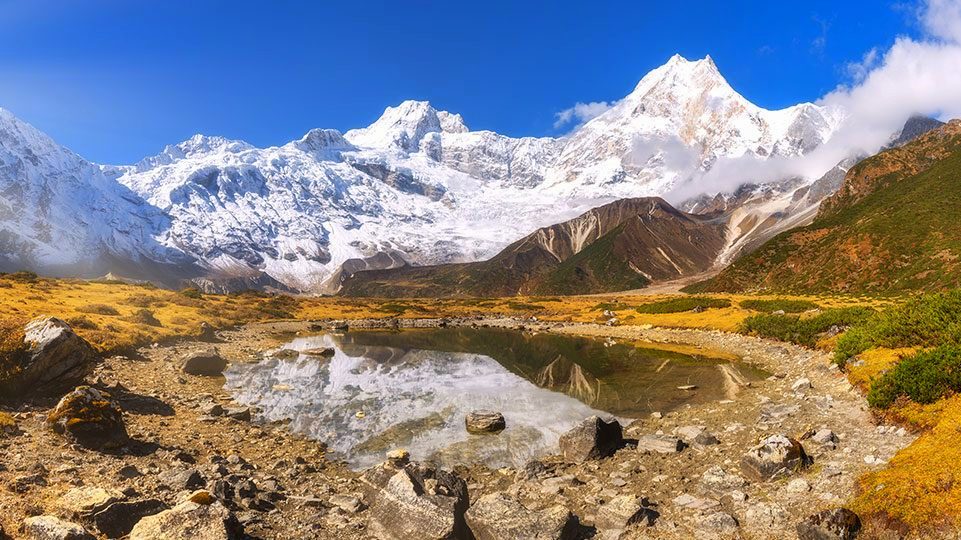
March to May Optimal Climbing Conditions
We consider the pre-monsoon window from March through May as the absolute sweet spot for peak climbing expeditions in Nepal. During these months, we experience the most favorable combination of weather stability, clear skies, and manageable temperatures that make high-altitude climbing both safer and more enjoyable. The atmospheric conditions during this period create what we call the "golden window" – when the jet stream moves northward, reducing wind speeds on major peaks like Everest, Makalu, and Cho Oyu.
Our experience shows that early March marks the beginning of this optimal period, with conditions gradually improving as we move toward April and May. The snow from winter storms has typically consolidated by this time, creating more stable climbing surfaces. We've observed that avalanche risks, while never completely eliminated, are generally more predictable during these months compared to other seasons.
The length of daylight hours also works in our favor during pre-monsoon season. We get longer climbing windows each day, which is crucial for summit attempts and technical sections that require good visibility. The sun's angle provides better warming of the mountains during the day, helping to soften ice and snow for more comfortable climbing conditions.
Weather Stability and Visibility Benefits
The pre-monsoon period offers us the most consistent weather patterns of the entire climbing calendar. We typically see high-pressure systems dominating the region, resulting in clearer skies and more predictable conditions. This stability allows us to plan summit attempts with greater confidence and reduces the likelihood of weather-related delays that can derail entire expeditions.
Visibility during these months is exceptional compared to other seasons. We regularly experience crystal-clear views that extend for hundreds of kilometers, making navigation easier and providing climbers with the breathtaking panoramic views they've dreamed of. The absence of monsoon clouds means we can often see approaching weather systems from great distances, giving us valuable time to make informed decisions about continuing or retreating.
Morning conditions are particularly outstanding during pre-monsoon season. We often wake up to perfectly clear skies with minimal wind, creating ideal launch windows for summit attempts. The afternoon weather patterns are also more predictable, with any deterioration typically following recognizable patterns that experienced guides can read and anticipate.
Temperature Ranges for High-Altitude Climbing
Temperature management becomes much more reasonable during the pre-monsoon months. At base camp elevations (around 5,300-5,400 meters), we typically see daytime temperatures ranging from -5°C to 10°C (23°F to 50°F), making camp life significantly more comfortable than winter expeditions. Nighttime temperatures usually drop to between -10°C to -20°C (14°F to -4°F), which is manageable with proper gear.
As we ascend higher, the temperature gradients become more favorable during this season. At Camp 2 elevations (around 6,400 meters), daytime temperatures hover around -10°C to -5°C (14°F to 23°F), while nights can drop to -25°C to -30°C (-13°F to -22°F). These ranges allow for effective climbing during daylight hours without the extreme cold that characterizes winter attempts.
|
Altitude Level |
Daytime Temperature |
Nighttime Temperature |
|
Base Camp (5,300m) |
-5°C to 10°C |
-10°C to -20°C |
|
Camp 2 (6,400m) |
-10°C to -5°C |
-25°C to -30°C |
|
Camp 4 (7,900m) |
-20°C to -15°C |
-35°C to -40°C |
|
Summit Zone (8,000m+) |
-25°C to -20°C |
-40°C to -45°C |
At the highest elevations approaching summit zones, we still face serious cold with temperatures dropping to -40°C (-40°F) or lower, but the warming effect of increased solar radiation during longer daylight hours makes these temperatures more survivable than during winter months.
Crowd Levels and Permit Availability
Pre-monsoon season represents the busiest period for peak climbing in Nepal, and we need to plan accordingly. The popularity of this season means we're sharing the mountains with significantly more climbers, which has both advantages and challenges. The increased activity creates more established routes and better-maintained fixed lines, but it also means longer waits at technical sections and bottlenecks.
We recommend securing permits and booking expedition services well in advance – ideally 6-12 months before your planned departure. During peak season, popular mountains like Everest can see 300+ climbers attempting the summit within a few short weeks. This concentration of activity means we need to be flexible with our summit timing and prepared for potential delays caused by traffic on the routes.
The positive side of increased crowd levels is the enhanced safety net they provide. With more expedition teams on the mountain, rescue operations become more feasible, and the sharing of weather information and route conditions improves dramatically. We've seen countless examples where the collaborative spirit of the climbing community during busy periods has helped ensure everyone's safety and success.
Permit availability during pre-monsoon season requires early action. The Nepal Department of Tourism releases permits on a first-come, first-served basis for most peaks, and popular climbing dates fill up quickly. We always advise our clients to have backup date options and to consider slightly less popular peaks if flexibility allows, as these can offer equally rewarding experiences with fewer crowds.
Post-Monsoon Season Expedition Planning

September to November Climbing Advantages
We've seen countless expeditions succeed during autumn months, and there's good reason why we recommend this season so highly. The post-monsoon period brings exceptional climbing conditions that make summit attempts significantly more achievable. We notice that teams departing between September and November experience far fewer weather-related delays compared to other seasons.
Our experience shows that September offers the perfect transition period. The monsoon rains have cleared the air, creating pristine conditions for high-altitude climbing. We've guided numerous expeditions during this time and consistently observe better acclimatization rates among climbers. The temperatures remain moderate, reducing the risk of frostbite while still providing the crisp conditions needed for technical ascents.
October stands out as our favorite month for peak climbing. We've planned dozens of expeditions during this window and witnessed remarkable success rates. The weather systems stabilize completely by mid-October, giving us reliable forecast windows that extend 7-10 days ahead. This predictability allows our teams to position strategically for summit pushes without the uncertainty that plagues other seasons.
November brings its own advantages, particularly for experienced climbers seeking quieter mountains. We often recommend this month for teams wanting to avoid crowds while still maintaining excellent climbing conditions. The cold becomes more intense, but our properly equipped expeditions handle these temperatures without major issues. We've guided successful climbs well into late November, proving this extended season remains viable for determined climbers.
Crystal Clear Mountain Visibility Benefits
Nothing compares to the breathtaking visibility we witness during post-monsoon season. After months of monsoon clouds and precipitation, the atmosphere clears completely, revealing mountain vistas that leave even our most experienced guides speechless. We've photographed the Himalayas from base camps during this period, and the clarity rivals anything we've captured throughout the year.
Our teams consistently report seeing peaks from distances that seem impossible during other seasons. From Everest Base Camp, we regularly observe Cho Oyu, Lhotse, and Makalu with stunning definition. This exceptional visibility serves practical purposes beyond scenic appreciation. We use these clear conditions for route planning, identifying potential hazards, and making critical navigation decisions that impact expedition success.
The air quality during autumn months creates photography opportunities that our clients treasure for lifetimes. We've captured sunrise shots from Camp 2 on various peaks where every ridge line stands sharp against brilliant blue skies. Professional photographers join our expeditions specifically for these conditions, knowing they'll capture images impossible during cloudier seasons.
Navigation becomes significantly easier when we can see landmark features clearly. Our guides rely on visual references that remain obscured during monsoon and winter months. We've prevented teams from taking wrong routes simply because the clear conditions allowed us to spot correct paths from considerable distances. This visibility directly contributes to safety margins that we build into every expedition plan.
Stable Weather Patterns for Summit Attempts
We've analyzed weather data across multiple decades, and autumn consistently delivers the most stable patterns for high-altitude climbing. The jet stream shifts southward during this period, reducing the violent winds that make summit attempts impossible during other seasons. Our meteorological partnerships allow us to track these patterns precisely, giving our expeditions maximum advantage.
Summit windows become more predictable during September through November. We typically identify 3-4 day periods where conditions remain favorable for ascent and descent. These windows contrast sharply with spring seasons, where weather changes happen rapidly and unpredictably. Our success rates improve dramatically when we can plan summit pushes with confidence in sustained favorable conditions.
Temperature stability represents another crucial advantage we leverage during autumn expeditions. Daily temperature swings remain moderate, reducing equipment stress and improving climber comfort. We've documented temperature ranges that stay within manageable limits, preventing the extreme cold snaps that characterize winter climbing or the unpredictable warmth of early spring that can destabilize snow conditions.
Precipitation patterns during post-monsoon season follow predictable schedules. We rarely encounter surprise snowstorms that force emergency descents or extended shelter periods. Our logistical planning becomes more accurate when we can anticipate weather with greater certainty. Teams spend less time waiting in base camps and more time making steady progress toward summits, optimizing both time and resources invested in expeditions.
Peak-Specific Climbing Season Recommendations
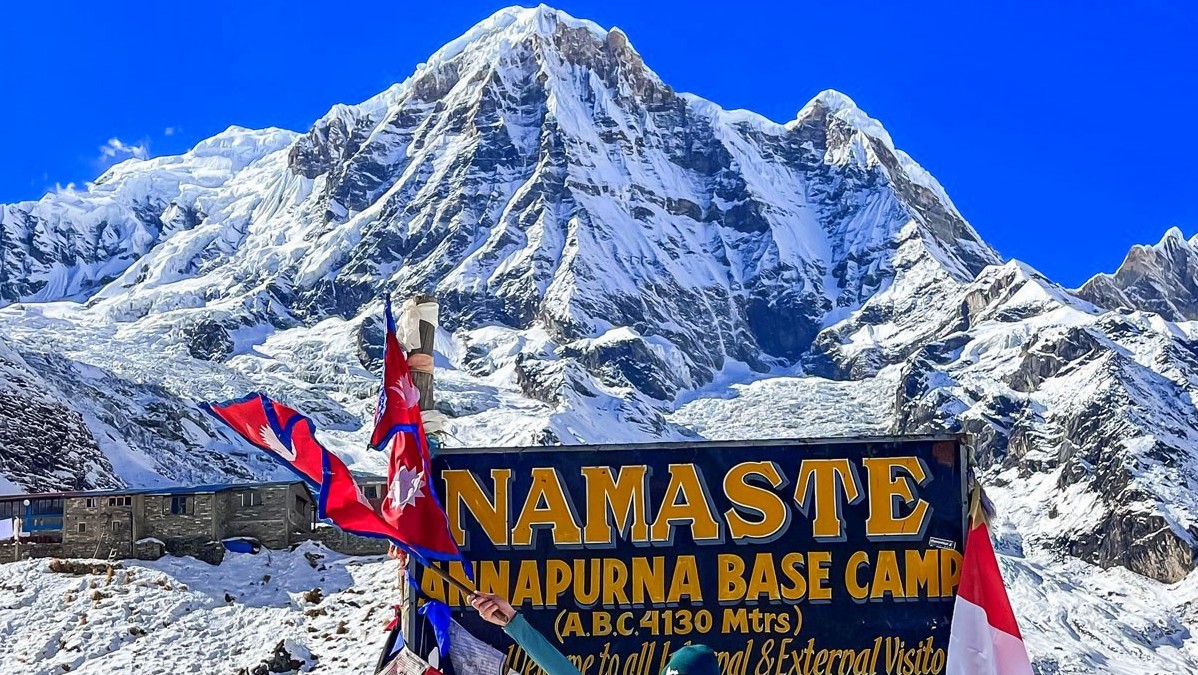
Everest Expedition Timing Strategies
We recommend two prime windows for Everest expeditions: the spring season from March to May and the autumn season from September to November. The spring season offers our climbers the most favorable conditions, with March providing base camp setup time and April-May delivering optimal summit windows. We've observed that May typically presents the best weather patterns, with clearer skies and more stable atmospheric conditions.
Our autumn expeditions capitalize on post-monsoon clarity, though we advise clients that this season requires more aggressive timeline management due to shorter weather windows. We schedule autumn Everest attempts between late September and early November, when the monsoon has cleared but winter storms haven't yet established their grip.
Weather pattern analysis shows us that spring expeditions benefit from longer acclimatization periods, while autumn attempts demand more precise timing and backup planning. We structure our spring expeditions with multiple acclimatization rotations, giving climbers better adaptation opportunities.
Annapurna and Dhaulagiri Optimal Windows
Annapurna I presents unique challenges that shape our seasonal recommendations. We plan expeditions during the brief pre-monsoon window from April to early June, when avalanche risks decrease and weather stability improves. Our experience shows that Annapurna's notorious weather patterns require flexible scheduling and extended expedition timelines.
For Dhaulagiri, we utilize both spring and autumn seasons, though spring offers superior conditions. Our spring expeditions run from March through May, with April providing the sweet spot for summit attempts. Autumn expeditions work well from September to November, particularly for experienced climbers comfortable with shorter weather windows.
|
Peak |
Spring Season |
Autumn Season |
Optimal Summit Window |
|
Annapurna I |
April - June |
Limited options |
Late April - Early May |
|
Dhaulagiri |
March - May |
September - November |
Mid to Late April |
Manaslu and Cho Oyu Seasonal Considerations
Manaslu responds exceptionally well to autumn expeditions. We schedule most Manaslu climbs from September through November, when post-monsoon conditions create excellent visibility and stable weather patterns. The mountain's location makes it particularly suitable for autumn attempts, as it escapes the harsh winter conditions affecting other peaks.
Cho Oyu offers flexibility across both seasons. Our spring expeditions run from April to June, while autumn attempts span September to November. We've found that Cho Oyu's relatively moderate technical difficulty makes it an excellent choice for climbers seeking 8000-meter experience during either seasonal window.
Spring Manaslu expeditions face monsoon approach challenges, making autumn our preferred recommendation. Cho Oyu's position near the Tibetan border creates unique weather patterns that we monitor closely for optimal timing decisions.
Technical Peaks Best Climbing Periods
Technical peaks like Ama Dablam, Island Peak, and Mera Peak require specialized timing strategies. We schedule Ama Dablam expeditions during two windows: October-November for autumn attempts and March-April for spring climbs. Autumn provides clearer views and more stable weather, while spring offers warmer conditions but increased avalanche considerations.
Island Peak works well during both seasons, though we prefer October-November for optimal conditions. Our spring Island Peak expeditions align with Everest base camp treks, creating excellent acclimatization opportunities for climbers preparing for bigger objectives.
Mera Peak offers year-round climbing possibilities, but we recommend October-November and March-May as prime seasons. Winter ascents are possible but require specialized cold-weather expertise and equipment.
Lesser-Known Peaks Seasonal Opportunities
Hidden gems like Himlung Himal, Chulu East, and Pisang Peak offer unique seasonal advantages. We've developed specialized timing strategies for these peaks that avoid crowded seasons while maximizing weather stability.
Himlung Himal performs excellently during autumn months, particularly October, when weather patterns stabilize after monsoon clearing. Our expeditions benefit from fewer crowds and pristine climbing conditions.
Chulu East and West peaks work well during both seasons, but we prefer spring attempts when longer daylight hours provide safety margins for technical sections. These peaks offer excellent training opportunities for larger objectives while maintaining manageable risk profiles.
Pisang Peak serves as an outstanding acclimatization climb, and we often incorporate it into larger expedition strategies. October provides optimal conditions, though spring attempts work well for climbers building toward bigger goals.
We customize seasonal recommendations based on individual climber experience, objectives, and risk tolerance, ensuring each expedition maximizes success potential while maintaining safety standards.
Weather Patterns and Climbing Safety Considerations
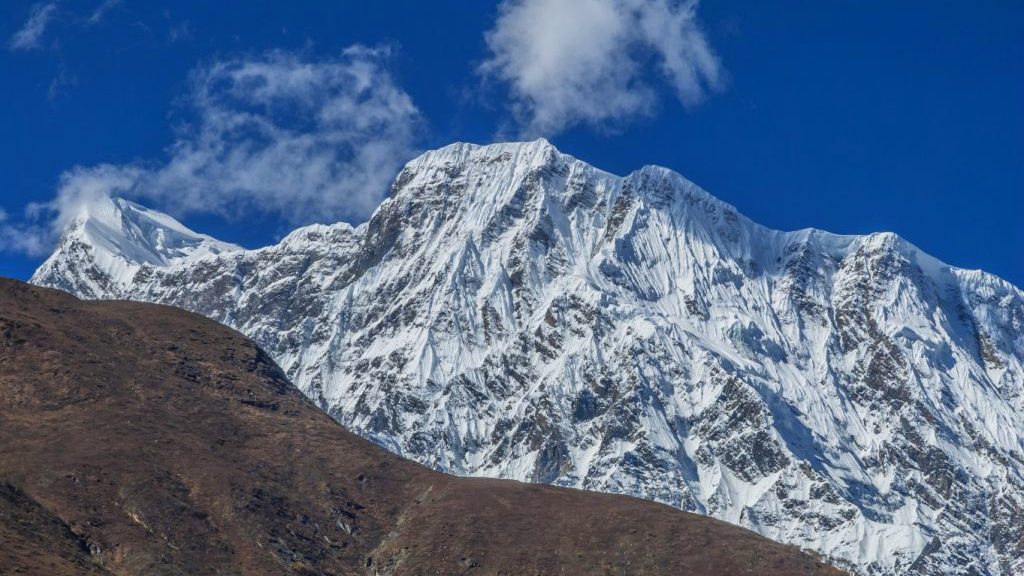
Monsoon Impact on Climbing Routes
We've witnessed firsthand how Nepal's monsoon season transforms the mountain landscape from June through September. The heavy rainfall brings significant challenges that make climbing extremely dangerous during these months. Our experience shows that trails become treacherous mudslides, while rock faces become unstable due to water saturation.
The monsoon creates what we call "avalanche season" on most major peaks. Snow becomes waterlogged and heavy, creating perfect conditions for deadly avalanches that can occur without warning. We've observed that routes like the Everest Base Camp trail become nearly impassable, with bridges washing out and landslides blocking access roads.
During monsoon months, we see cloud cover persist for weeks, making helicopter rescues impossible and cutting off emergency evacuation routes. The constant moisture also increases the risk of altitude-related illnesses as bodies struggle to regulate temperature in the humid conditions. Our safety protocols require us to avoid scheduling any major expeditions during this period, as the risks far outweigh any potential benefits.
Wind Patterns Affecting Summit Success
Our meteorological data reveals that wind patterns in the Himalayas follow predictable seasonal cycles that directly impact summit success rates. We track the jet stream's position throughout the year, noting how it dips south during winter months, bringing fierce winds exceeding 100 mph to peaks above 8,000 meters.
Spring expeditions benefit from what we call "weather windows" - brief periods when the jet stream moves north, creating calmer conditions perfect for summit attempts. We've found these windows typically last 3-7 days and occur most frequently in May. Our guides monitor wind forecasts constantly, as sustained winds above 50 mph make summit attempts not just difficult, but deadly.
During autumn climbing seasons, we observe more stable wind patterns compared to spring. The post-monsoon period from October to November offers consistent conditions, though wind speeds can still reach dangerous levels above 7,000 meters. We've learned to read local wind indicators like snow plume formations on ridges to predict conditions 24-48 hours ahead.
Our safety protocols include mandatory wind speed limits for different altitude zones. Below 6,000 meters, we continue climbing in winds up to 40 mph, but above 8,000 meters, we halt all movement when sustained winds exceed 30 mph.
Temperature Fluctuations at Different Altitudes
We've documented dramatic temperature variations that climbers must prepare for across different altitude zones in Nepal's mountains. At base camp elevations around 5,300 meters, temperatures can range from 10°C during sunny days to -15°C at night, even during favorable seasons.
Our temperature monitoring shows that for every 1,000 meters of elevation gain, temperatures drop approximately 6-8°C. This means summit temperatures on 8,000-meter peaks regularly reach -40°C during winter months, while even favorable spring conditions can see summit temperatures of -25°C to -30°C.
We've observed that morning temperatures often start extremely cold, sometimes -20°C at higher camps, then warm rapidly once the sun hits the mountain faces. This creates challenging conditions where we might start climbs wearing heavy insulation, only to strip down layers within hours as temperatures rise 15-20 degrees.
The most dangerous temperature fluctuations occur during altitude transitions. We've seen climbers experience heat exhaustion at lower elevations during midday, then face hypothermia risk just hours later as they ascend into colder zones after sunset.
Precipitation Levels Throughout the Year
Our precipitation data shows distinct seasonal patterns that every climber needs to understand. We measure minimal snowfall from December through February, but temperatures remain too cold for safe climbing on most major peaks. The dry winter period gives way to increasing snow activity in March and April as spring weather patterns develop.
We track peak precipitation during the monsoon months, when some areas receive over 80% of their annual moisture. Base camp areas can see 20-30 cm of fresh snow in single storm events, while lower elevations experience torrential rainfall that creates flash flood conditions in valleys and river systems.
Pre-monsoon months of April and May offer the best balance - minimal precipitation combined with stable weather systems. We typically see only 2-3 storm systems per month during this period, each lasting 1-2 days before clearing. Post-monsoon conditions in October and November provide similar stability, though we observe slightly higher precipitation levels as winter weather patterns begin establishing.
Our route planning accounts for seasonal precipitation by positioning camps and supply depots based on historical snowfall data. We've learned that even small amounts of fresh snow can make technical climbing sections extremely dangerous, so we factor precipitation forecasts into all summit timing decisions.
Booking and Preparation Timeline Strategies
Permit Application Deadlines and Requirements
We've learned that getting your permits sorted out early can make or break your expedition plans. Most climbing permits for major peaks like Everest, Lhotse, and Makalu require applications to be submitted at least 35 days before your planned expedition start date. However, we always recommend our clients begin the permit process 60-90 days in advance to avoid any last-minute complications.
The Department of Tourism in Nepal processes permits during regular business hours, and we've seen delays during peak application periods in February and August when everyone's scrambling to get their paperwork ready. Spring expedition permits typically see the highest demand, so we start gathering documents for our clients as early as December for March departures.
Each permit application needs a comprehensive medical certificate, insurance documentation covering helicopter rescue up to the summit altitude, and a detailed expedition itinerary. We work closely with our clients to ensure every document meets the specific requirements, as even small discrepancies can cause weeks of delays.
For popular peaks during prime seasons, permit quotas can fill up quickly. We maintain strong relationships with the appropriate authorities and can secure permits even when availability appears limited, but this requires planning months in advance rather than weeks.
Training Schedule Coordination with Seasons
Our expedition planning starts with aligning your training schedule to Nepal's climbing seasons and your home country's weather patterns. We recommend beginning serious physical preparation 12-18 months before your expedition, timing your peak fitness to coincide with your departure date.
For spring expeditions departing in March, we suggest starting intensive training during the previous summer months. This allows you to build a strong cardiovascular base during warmer weather, then transition to high-altitude simulation and technical skills training during fall and winter months. We've found that clients who can train outdoors during winter months arrive better prepared for the harsh mountain conditions.
Post-monsoon expeditions in September and October require a different approach. We recommend starting training in January, building through spring and summer, with peak conditioning reached by late August. This timeline works particularly well for climbers in the Northern Hemisphere who can take advantage of summer hiking and climbing conditions.
Our training coordinators help design programs that include:
-
Cardiovascular endurance building: 6-8 months of progressive cardio training
-
Technical skills development: 4-6 months of rope work, crampon use, and rescue techniques
-
High-altitude acclimatization: 2-3 months of simulated altitude training or high-elevation climbs
-
Mental preparation: Ongoing stress management and decision-making practice
We track our clients' progress monthly and adjust training plans based on seasonal conditions in their home locations. This personalized approach means you're not fighting against weather conditions while trying to maintain peak fitness.
Equipment Procurement Timing Advantages
Smart timing of equipment purchases can save you thousands of dollars while ensuring you get exactly what you need. We've identified several key purchasing windows that our clients consistently benefit from.
End-of-season sales provide the biggest savings opportunities. High-quality mountaineering gear goes on sale during late spring and early fall as retailers clear inventory. We maintain relationships with top gear manufacturers and can often secure group discounts for our clients when they purchase during these windows.
Pre-season availability becomes critical for specialized items like custom-fitted boots and expedition-grade sleeping systems. We recommend ordering these items 4-6 months before departure to ensure proper fit and allow time for any necessary adjustments or exchanges.
Here's our recommended procurement timeline:
|
Equipment Category |
Optimal Purchase Timing |
Key Considerations |
|
Base layers and insulation |
6-8 months prior |
Size variations with weight loss/gain during training |
|
Boots and crampons |
5-6 months prior |
Break-in period and custom fitting requirements |
|
Technical gear (ropes, harnesses) |
3-4 months prior |
Latest safety certifications and standards |
|
Electronics and navigation |
2-3 months prior |
Rapid technology updates and battery life testing |
We maintain detailed equipment lists for each peak and season combination, accounting for temperature variations and technical requirements. Our gear specialists review these lists quarterly to incorporate new products and remove discontinued items.
Rental vs. purchase decisions often depend on timing as well. Specialized items like expedition tents, oxygen systems, and communication devices are often more cost-effective to rent, especially for first-time climbers. We coordinate rental bookings 90 days in advance to ensure availability during peak seasons.
Our equipment check process begins 30 days before departure, giving us time to address any gear issues or make last-minute replacements. We've found that this systematic approach prevents the gear-related delays that can derail expedition timelines and significantly impact costs.
Our exploration of Nepal's climbing calendar reveals two clear windows of opportunity for your dream expedition. The pre-monsoon season from March to May offers stable weather and warmer temperatures, while the post-monsoon period from September to November delivers crystal-clear mountain views and excellent climbing conditions. We've seen how different peaks have their own optimal timing, and understanding these patterns can make the difference between a successful summit and a disappointing retreat.
The key to a memorable climbing experience lies in matching your expedition timing with both the mountain's seasonal patterns and your personal goals. Book your trip 6-12 months in advance to secure the best guides and permits, and remember that shoulder seasons can offer significant cost savings without compromising safety. Weather patterns change quickly in the Himalayas, so we always recommend working with experienced local operators who understand these mountains intimately. Start planning your Nepal climbing adventure today, and let the timing work in your favor for the expedition of a lifetime.
If you need any further information, please contact us by email: at [email protected], Phone: at +977- 985 100 5129 (WhatsApp)
#Tags
Tripadvisor
5.0928 reviewsGoogle
4.8114 reviewsFacebook
4.1 recommend44 ReviewsTrustpilot
4.1 Great(5 reviews)- Trusted by50K plus traveller




